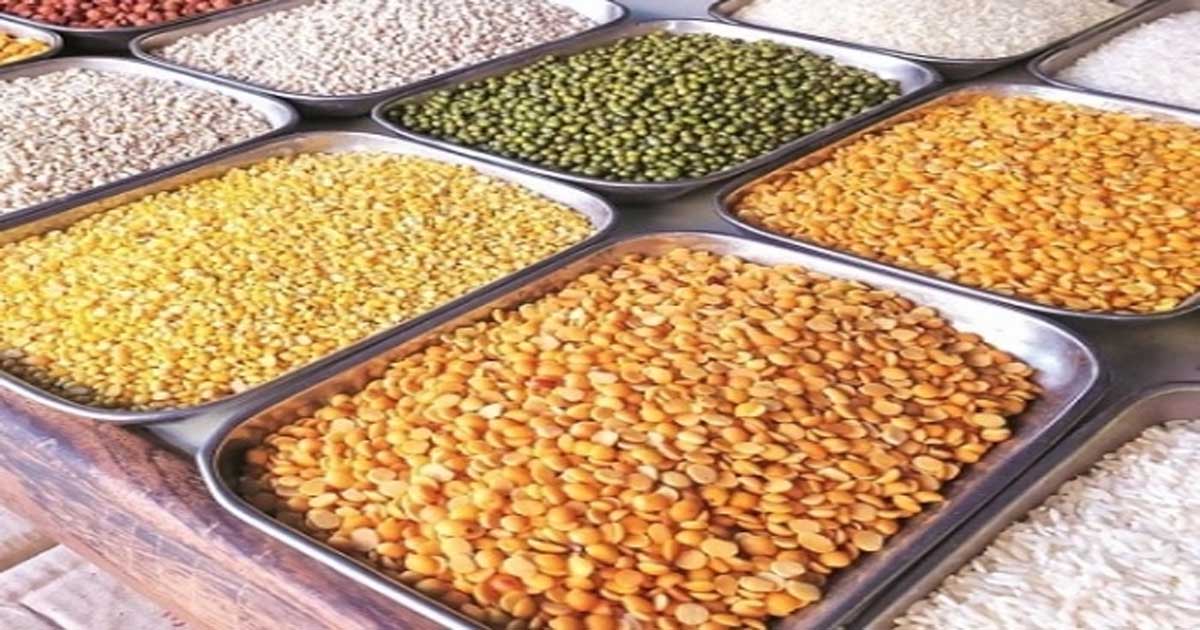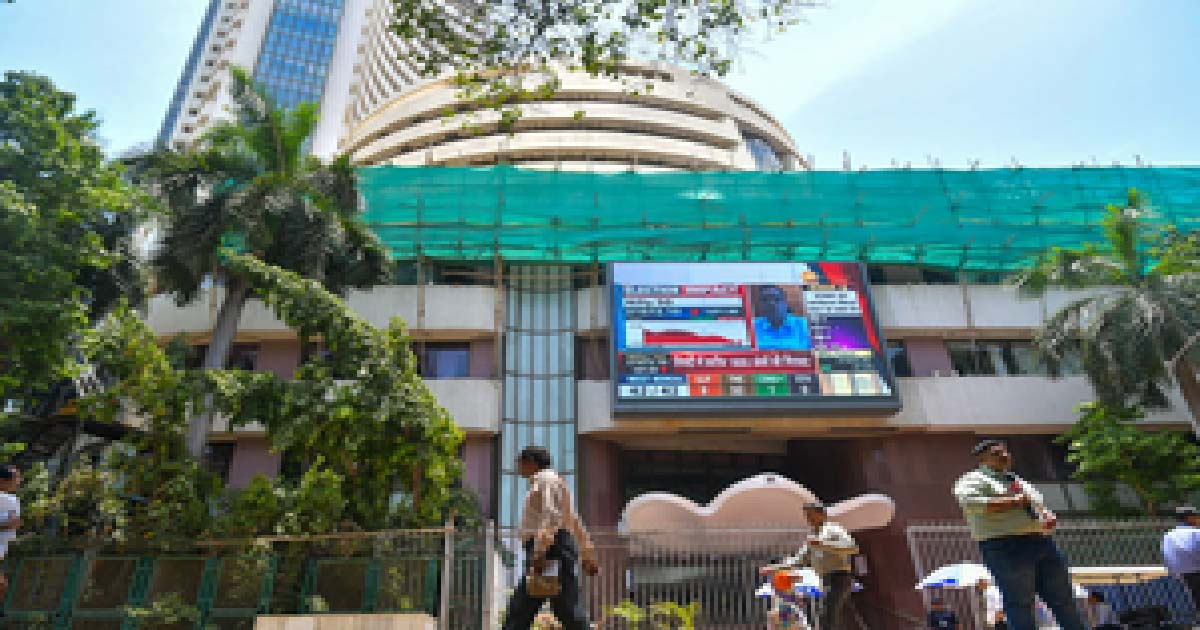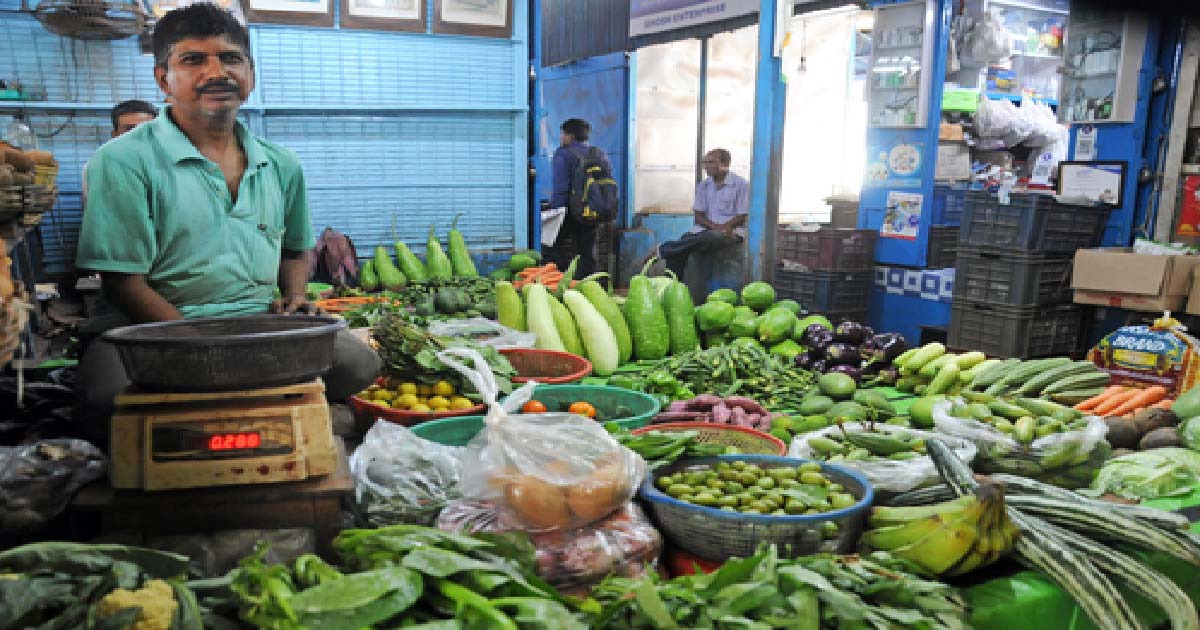Business
Cabinet gives go-ahead for Rs 11,440 crore plan to achieve self-reliance in pulses

New Delhi, Oct 1: The Union Cabinet, chaired by Prime Minister Narendra Modi, on Wednesday approved the Mission for Aatmanirbharta in Pulses with a financial outlay of Rs 11,440 crore.
The landmark initiative aimed at boosting domestic production and achieving self-sufficiency in pulses will be implemented over a six-year period from 2025-26 to 2030-31.
The Pulses Mission is expected to benefit around 2 crore farmers with the supply of better seeds, post-harvest infrastructure and 100 per cent assured procurement of tur, urad, and masoor pulses from growers at the Minimum Support Price during the next 4 years, according to an official statement.
Pulses hold special importance in India’s cropping systems and diets. India is the world’s largest producer and consumer of pulses. With rising incomes and standard of living, pulses’ consumption has increased. However, domestic production has not kept pace with demand, leading to a 15–20 per cent increase in pulses imports.
To make improved varieties widely available, 126 lakh quintals of certified seeds will be distributed to pulse-growing farmers, covering 370 lakh hectares by 2030-31.
The Mission also seeks to expand the area under pulses by an additional 35 lakh hectares by targeting rice fallow areas and other diversifiable lands, supported by promoting intercropping and crop diversification. For this, 88 lakh seed kits will be distributed free of cost to the farmers.
To reduce this import dependency, meet rising demand, maximise production, and enhance farmers’ income, a 6-year “Mission for Aatmanirbharta in Pulses” was announced in the FY 2025-26 Budget. The Mission will adopt a comprehensive strategy covering research, seed systems, area expansion, procurement, and price stability.
The emphasis will be placed on developing and disseminating the latest varieties of pulses which are high in productivity, pest-resistant and climate-resilient. Multi-location trials will be carried out in major pulse-growing states to ensure regional suitability.
By 2030-31, the Mission is expected to expand the area under pulses to 310 lakh hectares, increase production to 350 lakh tonnes, and raise yield to 1130 kg/ha. Alongside productivity gains, the Mission will generate significant employment.
In addition, to ensure availability for premium quality seeds, states will prepare five-year rolling seed production plans. The breeder seed production will be supervised by the ICAR Foundation, and certified seed production will be done by state and central level agencies, and closely tracked through the Seed Authentication, Traceability & Holistic Inventory (SATHI) portal.
This will be complemented by convergence with the soil health programme, Sub-Mission on Agricultural Mechanisation, balanced fertiliser use, plant protection, and extensive demonstrations by ICAR, KVKs, and state Agriculture Departments to promote best practices.
Capacity building of farmers and seed growers will be taken up through structured training programmes to promote sustainable techniques and modern technologies.
To strengthen markets and value chains, the Mission will help develop post-harvest infrastructure, including 1,000 processing units, thereby reducing crop losses, improving value addition, and increasing farmer incomes. A maximum subsidy of Rs 25 lakh will be available for setting up processing and packaging units.
The Mission will adopt a cluster-based approach, tailoring interventions to the specific needs of each cluster. This will enable more effective allocation of resources, enhance productivity, and promote geographic diversification of pulse production.
A major feature of the Mission will be to ensure maximum procurement of tur, urad, and masoor under the Price Support Scheme (PSS) of PM-AASHA. NAFED and NCCF will undertake 100 per cent procurement in participating states for the next four years from farmers who register with these agencies and enter into agreements.
Additionally, to safeguard farmer confidence, the Mission will establish a mechanism for monitoring global pulse prices.
The mission seeks to achieve the goal of Atmanirbharta (self-reliance) in pulses, reduce import dependency and conserve valuable foreign exchange while boosting farmers’ incomes. This mission will also accrue significant environmental benefits in the form of climate resilient practices, improved soil health and making productive use of crop fallow areas.
Business
Indian stock market ends in bullish tone over hopes of renewed FII inflows

Mumbai, Dec 13: Indian equity benchmarks made marginal losses during the week amid sustained FII outflows and uncertainty surrounding the US-India trade negotiations.
However, the market ended the week in a bullish tone with Nifty surging 0.57 per cent on the last trading day after the US Federal Reserve announced a 25-bps rate cut.
Benchmark indices Nifty and Sensex dipped 0.36 and 0.17 per cent during the week to close at 26,046 and 85,267, respectively.
Indian equities opened the week on a subdued note, amid continued rupee depreciation and negative global cues due to rising Japanese bond yields.
The US Fed rate cut later in the week eased liquidity concerns and fuelled hopes of renewed FII inflows. With supportive central bank policies, steady domestic investments, and optimism over trade progress despite unclear timelines, benchmarks closed the week on a strong note.
India’s year-on-year inflation rate based on the Consumer Price Index (CPI) was estimated at 0.71 per cent for November this year which was marginally higher than the 0.25 per cent in October, according to figures released by the Ministry of Statistics.
Broader indices underperformed, with the Nifty Midcap100 and Smallcap100 down 0.51 per cent and 0.67 per cent, respectively, in a week.
Sectoral performance was mixed, with IT under pressure while PSU banks, real estate and consumer durables witnessed selective buying.
Hrishikesh Yedve, AVP Technical and Derivative Research, Asit C. Mehta Investment Interrmediates, said that Nifty’s weekly chart shows buying interest at lower levels.
Nifty has 26,200 and 26,325 as stiff resistance levels while 25,700 will act as support zone, he added.
Analysts said that markets will likely remain positive in near future but sensitive to rupee stability, FII flow trends, trade agreement clarity, and cues from major central banks abroad.
Amidst risks from currency fluctuations and global trade uncertainties, improving earnings visibility and liquidity support provide a constructive backdrop and downside protection, they added.
Business
Maharashtra on path to becoming GCC hub: CM Fadnavis

Nagpur, Dec 12: Chief Minister Devendra Fadnavis on Friday announced that a crucial milestone has been achieved in the journey to establish Maharashtra as a GCC (Global Capability Centre) Hub.
He said that the Brookfield company is set to build Asia’s largest Global Capability Centre (GCC) in Mumbai, spanning approximately 2 million square feet.
The Chief Minister said that this project is expected to generate a total of 45,000 jobs, including 15,000 direct and 30,000 indirect jobs.
He stated that due to the state’s talent pool, infrastructure, and industry-friendly environment, Maharashtra is becoming a preferred destination for Global Capability Centres.
“The new GCC policy will lead to large-scale skill-based job creation and economic growth,” he added.
He also mentioned that FedEx, a global leader in the logistics sector, is keen to invest in its GCC and other operations near the Mumbai-Navi Mumbai airport area, said the government release.
The Chief Minister informed that he requested Microsoft to consider Maharashtra for their investments, noting that their largest existing investment is already in the state.
He expressed confidence that Microsoft will make a major investment in the future and take the lead in making Maharashtra an Artificial Intelligence (AI) centre.
The Chief Minister said that Maharashtra’s model for crime control with the help of Artificial Intelligence is a guiding light for the entire country.
Chief Minister Fadnavis confirmed that Microsoft has assured priority to Maharashtra in their largest ever investment in India, amounting to $17 billion.
He further highlighted the ‘Marble’ platform developed by Maharashtra, which helps detect cyber and financial crimes in just 24 hours instead of 3-4 months.
He said that this has resulted in saving people’s money and has expedited the process of tracking criminals.
Business
India’s CPI inflation estimated at 0.71 pc for Nov, food inflation stays in negative zone

New Delhi, Dec 12: India’s year-on-year inflation rate, based on the Consumer Price Index (CPI), was estimated at 0.71 per cent for November this year which was marginally higher than the 0.25 per cent in October, according to figures released by the Ministry of Statistics on Friday.
Food inflation stayed in the negative zone during November at (-) 3.91 per cent as prices of food goods fell compared to the same month of the previous year. Food inflation has now stayed negative for the sixth month in a row, easing the burden on household budgets.
However, the increase in headline inflation during November 2025 is mainly attributed to an increase in the inflation of vegetables, eggs, meat and fish, spices, and fuels compared to October, according to an official statement.
The retail inflation had eased further in October, after having plummeted to an over 8-year low of 1.54 per cent in September, as prices of food items and goods across sectors fell during the month.
The declining trend in food prices continued in October as food inflation fell deeper in the negative zone at (-) 5.02 per cent from (-) 2.28 per cent in September.
However, the overall outlook for inflation remains benign.
The RBI’s monetary policy committee (MPC) last week slashed its forecast for India’s inflation rate for the financial year 2025-26 to 2 per cent from 2.6 per cent predicted in October due to the sharp decline in food prices and the GST rate cuts playing out.
RBI Governor Sanjay Malhotra announced a reduction in the repo rate by 25 basis points to 5.25 per cent from 5.5 per cent earlier, as inflation had come down and the monetary policy could focus on boosting growth.
Malhotra said that the surge in economic growth to 8.2 per cent in the second quarter of the current financial year and the sharp decline in inflation to 1.7 per cent had provided a rare “Goldilocks period” for the Indian economy.
“The MPC noted that headline inflation has eased significantly and is likely to be softer than the earlier projections, primarily on account of the exceptionally benign food prices. Reflecting these favourable conditions, the projections for average headline inflation in 2025-26 and Q1:2026-27 have been further revised downwards.”
Malhotra also pointed out that core inflation (which excludes food and fuel) remained largely contained in September-October, despite continued price pressures exerted by precious metals. Excluding gold, core inflation moderated to 2.6 per cent in October. Overall, the decline in inflation has become more generalised, he added.
The RBI Governor observed that food supply prospects have improved on the back of higher kharif production, healthy rabi sowing, adequate reservoir levels and conducive soil moisture. Barring some metals, international commodity prices are likely to moderate going forward.
-

 Crime3 years ago
Crime3 years agoClass 10 student jumps to death in Jaipur
-

 Maharashtra1 year ago
Maharashtra1 year agoMumbai Local Train Update: Central Railway’s New Timetable Comes Into Effect; Check Full List Of Revised Timings & Stations
-

 Maharashtra1 year ago
Maharashtra1 year agoMumbai To Go Toll-Free Tonight! Maharashtra Govt Announces Complete Toll Waiver For Light Motor Vehicles At All 5 Entry Points Of City
-

 Maharashtra1 year ago
Maharashtra1 year agoFalse photo of Imtiaz Jaleel’s rally, exposing the fooling conspiracy
-

 National News1 year ago
National News1 year agoMinistry of Railways rolls out Special Drive 4.0 with focus on digitisation, cleanliness, inclusiveness and grievance redressal
-

 Maharashtra1 year ago
Maharashtra1 year agoMaharashtra Elections 2024: Mumbai Metro & BEST Services Extended Till Midnight On Voting Day
-

 National News1 year ago
National News1 year agoJ&K: 4 Jawans Killed, 28 Injured After Bus Carrying BSF Personnel For Poll Duty Falls Into Gorge In Budgam; Terrifying Visuals Surface
-

 Crime1 year ago
Crime1 year agoBaba Siddique Murder: Mumbai Police Unable To Get Lawrence Bishnoi Custody Due To Home Ministry Order, Says Report












